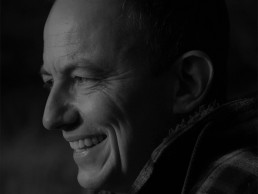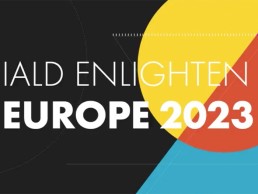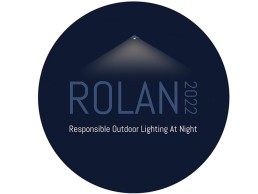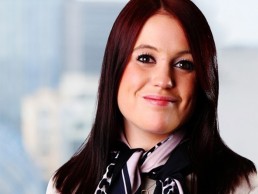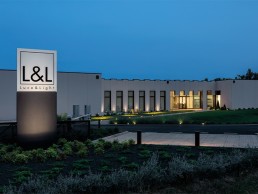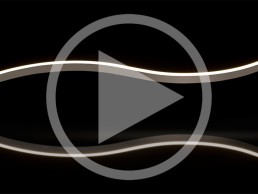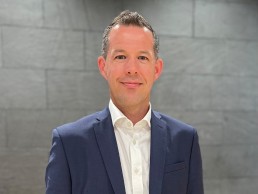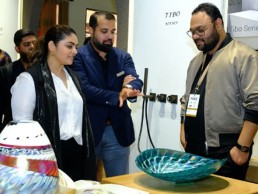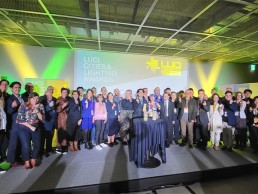WEEE - A leaky business or key component to circular economy?
Dave Hollingsbee of Stoane Lighting speaks to Nigel Harvey from Recolight, and Stewart Price of Lumicom about the pros and cons of the WEEE Directive.
At the time of writing in the UK there are approximately 115 AATF’s (Approved Authorised Treatment Facilities – companies licenced to carry out teardown, shredding, separation and processing work) and 27 registered PCSs (Producer Compliance Schemes – companies responsible for collection of WEEE on behalf of their producer members). Two of these schemes (Recolight and Lumicom) are the best known in the UK lighting arena, both have contributed to this article.
Since February 2007, the WEEE (Waste from Electrical and Electronic Equipment) Directive has been law in the UK, undergoing substantial changes in 2013. WEEE collection, recycling and recovery targets have been set on an annual basis for household since 2014. For example, in 2022, PCSs were collectively assigned a household WEEE collection target of 4,145 tonnes (lamps) and 5,992 tonnes (luminaires). Those targets were then split among PCSs in accordance with the aggregated market share of their household members.
With improving processing technologies at AATFs, we are seeing impressive recycling and recovery figures. For example, this data shows what materials can be successfully recovered from a batch of waste luminaires:
Recycling is a positive intervention but is not the best solution
Why are we so enthusiastic about remanufacture The data in the above table [fig 1] demonstrates one of the shortcomings of recycling, which is vital to acknowledge if our industry is to fully embrace a circular economy: recycling erodes value. The batch of waste luminaires is converted back into various basic materials – such as metals. Those can be successfully returned into the raw materials supply chain. But all the embedded carbon associated with the manufacture of the original products is lost.
What’s more, a significant proportion – in this case 14.5% – is diverted to “waste to energy”. It is effectively incinerated to produce energy – but in the process, releases carbon. Arguably displacing the equivalent extraction of virgin fossil fuel but nonetheless still contributing to the climate crisis.
The waste hierarchy [fig 2] quite rightly puts recycling below prevention, repair, and reuse. To drive improved sustainability in the lighting sector, we must get much better at applying the waste hierarchy. That means prioritising repair and reuse above recycling. Historically in our industry, we have regarded getting waste recycled as good enough. We need to change that mentality.
So, assuming a fixture has reached a point where re-use, repair or remanufacture are not viable, what does recycling look like?
Significant volumes of higher grade, higher value material are now being responsibly recovered. Dangerous compounds such as the Persistent Organic Pollutants (e.g. brominated flame retardants) and mercury are responsibly separated and kept out of waste streams, water tables etc.
Techniques and hardware are continually improving, similarly the demand for recovered material evolves. Coined in the 1980s the expression “Urban Mining” is now a household term. There is demand for the recovered elements. A recent facility tour of Waste Expert’s Huddersfield facility organised by The Society of Light and Lighting (SLL) offered invaluable first-hand insight to a group of the society members of what the process looks like.
At this stage it has to be noted that research has shown that >165,000 tonnes of household WEEE generated annually never makes it into a registered WEEE treatment facility, and instead is disposed of with general waste. Clearly awareness and infrastructure investment is still needed.
Household and dual use lighting specific figures: the lamps collection rate is quite high – in 2021 around 47% of lamps were collected and recycled. The government is likely to consult on implementing kerbside collection of WEEE for households.
But for non-household fittings, that figure was a lot lower. Only around 6.3% was returned through the PCS network. The fate of the rest is unclear, but it was probably recycled as scrap metal. That is suboptimal, and may mean that some of the hazardous materials were not properly separated and treated.
What WEEE handling provision did you see on site at your last renovation project?
Going back a stage
That is waste capture. But what about perfectly functional kit that is no longer needed by a client/venue? Over recent years we have seen a proliferation of new approaches: Lighting as a Service (LaaS), Buy-back schemes, third party company and OEM initiated remanufacturing offerings.
To properly understand the realities of what happens to redundant lighting equipment, we must look at the options faced on site. We know just what WEEE is and what it is not. There is an obvious challenge to capture more of the missing waste into the correct WEEE channels, but what about the perfectly good equipment that is removed, surplus to requirement, i.e., not part of a LaaS or buy-back scheme or pre-destined for specific remanufacture and re-deployment? Most people reading this article will have seen examples on site of perfectly viable, valuable equipment, piled onto a pallet, stacked in a heap for WEEE processing or thrown into a general waste skip. An opportunity missed. With all the current effort going in to adapting the lighting industry to the circular economy it is preposterous. Is there a solution? Can we find a sustainable route that diverts valuable equipment from simply being pushed down the WEEE route for material and energy recovery?
It seems that the critical juncture occurs on site where a human technician makes a simple A or B* decision (see fig 3). The moment a fixture is assigned “B” status and a place in a WEEE collection receptacle, its only destination is the shredder.
While recovering materials and not components is the ‘ring’ of last resort (as utility is lost and recovered material can be lower grade than virgin) not to mention the energy involved (collection, cleaning, sorting, shredding, processing, transporting), It still plays a crucial role – it keeps materials in use and reduces waste stream. Recycling materials takes less energy than primary production and consequently less GHG emissions. For example, recycling aluminium requires only 5% of the energy used to create primary aluminium.
Conversations with PCSs suggest that early identification of those projects from which fittings could be reused or remanufactured is vital. Where that happens, and if the contractor is supportive, then providing suitable packaging materials, such as “cardboard bubble wrap” could help preserve the product for reuse. This crucially also requires companies that are willing to receive the product and rework it. Recolight has offered to deliver such product, free of charge, to companies in the UK willing to take responsibility for the product. This requires a new “ecosystem” of remanufacturers, willing to receive, remanufacture, and certify the product. That may also involve harvesting of components or subassemblies that are reusable.
Education and motivators could probably be implemented in order to stimulate the A or B decision process on site. But what next? Where should the pallet of good, protected, used equipment go?
Who is to store it? Where?
Who is to process it? How?
Who is to certify it, package it, warehouse it?
The wheres, hows and whos are answerable, but only once the “WHY?” is established.
Fundamentally we require specifiers and end-users to be willing to purchase reused product. That is what will drive this change – the pull of customers willing to purchase reused product. That requires confidence and trust in the remanufacturing process, and the development of the reuse standard BS8887 for the lighting industry should give purchasers the confidence that remanufactured product is fit for purpose. Resetting warranties. The commercials also need to work – it is unlikely that customers will pay more for reused product than they will for new product – Recolight’s offer to deliver reused product FOC should help spark this change.
As David Battersby puts it: There are two points – Education and Price. How does the industry engage with people “on the ground”? Educate and interact, and not just with larger companies, also wholesalers and other stakeholders. Circularity must turn a profit. David believes that while the lighting community may be increasingly aware of circularity, it relies on other parties to make it reality. Interdependency up and down the supply chain. So long as a margin and/or benefit can be identified then there is the “why”.
Answer the “WHY” and WEE PCS’s have the potential to become an even more vital ingredient to the circularity of the lighting industry.
www.greenlight-alliance.com
www.recolight.co.uk
www.lumicom.co.uk
IALD Enlighten Europe conference to return
(Germany) – For the first time since 2018, the IALD Enlighten conference will return to Europe, taking place at Cafe Moskau, Berlin on 30 June - 1 July 2023.
A popular event in the lighting calendar, the Enlighten conferences are created exclusively by and for lighting professionals across the Americas, Asia and Europe. Designed to bring the lighting community together to learn, share ideas and explore solutions with likeminded people who are passionate about light, the intimate events hope to inspire and motivate, moving architectural lighting design into the future.
The call for presentations for Enlighten Europe is now open. The IALD is seeking “energetic and engaging speakers to lead impactful learning experiences”.
“We know that lighting designers learn best from each other, and that idea is what the Enlighten conferences are built on, If you have a story to share, we want to hear it!”.
The deadline for proposals is 11 January 2023. More information can be found online here.
ROLAN publishes manifesto for outdoor lighting
(Worldwide) - The Founding Partners of ROLAN (Responsible Outdoor Lighting At Night) have published a 10-point Manifesto, which sets out a series of core principles for external illumination, and a plan of action to implement positive change in the lighting community. The hope is that this will lead to a more sustainable, healthier, and safer future for all.
Because the UN Sustainable Development Goals do not explicitly refer to external illumination and its multiple impacts, the Founding Partners of the ROLAN movement, are keen to address this in support of the SDG Goals. By following the principles outlined in the ROLAN manifesto, governments, businesses, and individuals support the implementation of the following SDG.
The principal authors of the ROLAN Manifesto are Dr Karolina M. Zielinska-Dabkowska - the ILLUME research group/the Gdansk University of Technology; and Ruskin Hartley - the International Dark‐Sky Association, with contributions and support from further Founding Partners: the Society of Light and Lighting (SLL), the International Association of Lighting Designers (IALD), the Illuminating Engineering Society (IES), the Institution of Lighting Professionals (ILP) and the Lighting Industry Association (LIA).
The 10-point manifesto is as follows:
- Everyone should have the right to access darkness and quality lighting, and light needs to be used and distributed fairly without discrimination.
- Start your design with darkness and only add light if it supports nocturnal placemaking and protects a view of the stars
- In all projects, strive to maximise the benefits of outdoor light at night by creating legible, safe spaces and journeys, simultaneously limiting each project’s environmental and financial costs.
- Apply the Five Principles of Responsible Outdoor Lighting in all lighting projects:
– All light should have a clear purpose.
– Light should be directed only to where it’s needed.
– Light should be no brighter than necessary.
– Light should be dimmed down or turned off when not required.
– Use warmer colour lights where possible. - Collaborate with researchers from different disciplines and specialties, such as astronomers, ecologists, biologists, lawyers, etc., so they can provide expertise on unfamiliar topics.
- Educate your clients about the importance of ROLAN.
- Ensure the community you work with is an active stakeholder and participant in all lighting projects. Enquire about their needs and wishes at night, and provide them with access to information to make informed decisions.
- Embrace technology by asking for support from the lighting industry to ensure that night-time biodiversity is sustained, and energy consumption is reduced. Engage with the lighting design industry to deliver an appropriate lighting solution.
- A circular economy should be integrated into the brief, design, specification, and manufacturing process of your project, as well as its installation.
- After project completion, visit the site at night with community stakeholders, to verify that your lighting design was fully implemented and meets ROLAN principles.
If your organisation would like to support ROLAN movement, please contact: k.zielinska-dabkowska@pg.edu.pl
High resolution PDFs of the ROLAN Manifesto can be downloaded here (Black background) and here (White background).
Inside the print edition of arc 131, it mistakenly reads that the ROLAN Manifesto was led by Dr Zielinska-Dabkowska. The principal authors of the manifesto were Dr. Zielinska-Dabkowska and Ruskin Hartley, with contributions and support from all ROLAN Founding Partners. We apologise for this inaccuracy.
LiGHT 22 – inaugural show hailed a massive success
(UK) – Held over two days at the Business Design Centre, the first-ever LiGHT exhibition closed its doors earlier this week to a buzz of positivity, from both visitors and exhibitors alike.
The design community came out in force to support the new show, with over 3,000 visitors passing through the doors to see more than 100 high-end international lighting brands present their latest product ranges for the architectural and decorative specification market.
Show highlights included the [d]arc thoughts talks programme, in collaboration with lighting control specialist Lutron, which benefited from a steady stream of guests across the two days, keen to learn more about the hot topics in lighting.
With every talk well attended, the headline panel saw more than 250 people crowd round the stage to see Masters of Light(ing) designers Sally Storey (Lighting Design International); Mark Major (Speirs Major); and Nick Hoggett (dpa lighting consultants) take to the stage to share their knowledge and expertise with the industry.
Visitors to the show also made good use of the dedicated workspace area on the gallery level. Illuminated by table lamps from British lighting brand Tala, LiGHT Work was a beautiful, relaxing space allowing show attendees to complete office tasks, while offering dedicated wi-fi, free coffee, and charging points.
Day one closed with a late-night drinks party hosted by the organisers [d]arc media and stand parties throughout the space.
The buzz around the new lighting event continued into day two with a LiGHT networking lunch hosted in the [d]arc thoughts talks arena, allowing visiting designers and manufacturers to meet in a relaxed space, while taking in a video interview with internationally celebrated product designer Michael Anastassiades.
The show was also heavily supported by industry trade bodies and organisations including: SLL; IALD; ILP; LIA; BIID; SBID; Women in Lighting, along with industry media organisations: ICON; On Office; Archiproducts; DeZeen; NLA; World Architecture News; and STIR.
Delighted with the success of the first year, [d]arc media Managing Director, Paul James said: “The show has been a resounding success with the design community coming out in force to support this first year. LiGHT 22 caters to the ever-growing design sector in London and further afield and is a new offering for lighting design built on [d]arc media’s knowledge and experience of the lighting specification market that spans more than 20 years.
“We have had nothing but positive feedback from exhibiting brands and visitors alike and I am really looking forward to what next year’s show will bring.”
Free to attend, dates for next year’s show are confirmed as 21 & 22 November 2023.
New Nulty appointment announced
(UK) – Nulty has recruited Charlotte Croft as Business Development Manager for Europe. Croft brings over 13 years’ experience in technical sales and lighting design to the role, having previously held positions at Whitecroft Lighting and Fagerhult Belysning.
Croft’s appointment comes at a key time for the London studio as Nulty looks to expand its project scope in the UK and beyond. Her remit will be to develop client relationships across all sectors and spearhead practice-to-practice meetings, CPD presentations and networking at industry events.
Paul Nulty, Founder, Nulty commented: “Charlotte is a very welcome addition to the Nulty team. Her friendly personality, industry knowledge and project management skills are exactly what we need to build successful partnerships with clients. Whilst we are expanding quickly with new studios in Pune and Bangkok, London remains an important market for us and is home to a huge number of global architecture and design practices, project management firms and leading developers. Her appointment signals our intent to cultivate these relationships and undertake exciting new work for the studio.”
Charlotte Croft, Business Development Manager, Nulty added: “I’m thrilled to join a company that I have long admired for delivering industry-leading lighting design. I’m looking forward to working closely with the design team to grow the company’s pipeline of work and build on the great results that have been achieved so far.”
L&L Luce&Light celebrates 15th anniversary
(Italy) – L&L Luce&Light has commemorated its 15th anniversary with the inauguration of its new headquarters in Dueville, in the province of Vicenza, Italy.
The large, modern space, the new office is better suited to the company’s current size, and as well as providing welcoming, efficient workspaces, offices and leisure areas for staff, it is an ideal venue for product tests and meetings with lighting professionals. In the showroom space, light is used to define each zone and their different functions. The space is divided into four zones – lounge area, test area, meeting area, and camera obscura.
Alongside the new premises, the Italian manufacturer has celebrated its 15th anniversary with certification of ISO 9001 – the international standard that assesses corporate quality management systems, and in recent years it has become a strategic choice for companies looking to be more competitive in the market.
“The recognition comes at a perfect time for L&L Luce&Light, at a stage of company maturity where we can guarantee the total commitment that certification brings with it,” a statement from the brand said. “It is a confirmation of a search for quality and continuous improvement – planning, executing, controlling, correcting this process several times, at all levels and in all areas of the organisation.”
Sylvania: Concord Equinox

Revolutionise architectural lighting with Concord Equinox, the innovative new vision of downlight from Sylvania Lighting.
Using QuarkStar’s award-winning system of light refraction, Concord Equinox provides functional downlighting with simultaneous upper lighting. This creates a halo backlight which improves the ambience and illuminates spaces in a beautiful way. The SylSmart Standalone version allows programming with a touch of a button using Sylvania’s smart lighting management system.
LightLine - Light that Connects
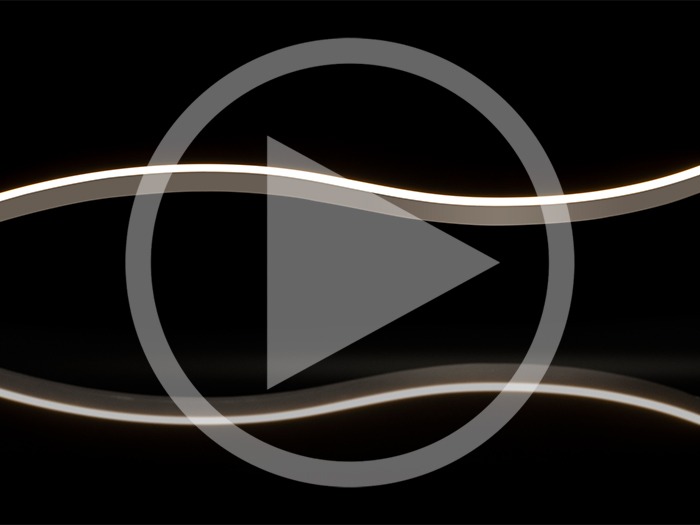
The LightLine can be used in many ways, whether to skilfully highlight façade contours, to add value to courtyards, public spaces or to set beautiful accents indoors. It is truly customizable, whether it is the length to the millimetre, the colour temperature or the way of mounting. The light line adapts to your design concept, giving you even more creative freedom in designing your project.
New Managing Director UK & Ireland at Zumtobel Group
Zumtobel Group has announced the appointment of Paul Kilburn as its new Managing Director, UK & Ireland.
Kilburn will report to Marc-André Rusch, Vice President Region West & South Europe. Rusch commented: "Paul will drive the UK Commercial business to achieve its goals and support its teams to deliver an outstanding experience to our internal and external customers. We look forward to a successful cooperation and wish Paul a good start at Zumtobel Group."
With more than thirty years of experience in the Electrical Building Product Industry, Kilburn joins Zumtobel Group from Volution Group Plc, a FTSE250 company and manufacturer of Ventilation products. During his eighteen years with the Group, Kilburn held several senior positions, including seven years as Managing Director.
He commented: “I am thrilled to be joining the Zumtobel Group at a moment where the UK and Ireland are poised for further growth. The Zumtobel Group brands, Thorn and Zumtobel, are renowned in the industry. It will be an honour to work with its talented teams as we get set to make an even bigger impact.”
FOAID Mumbai celebrates art, architecture and design
(India) – Held on 7-8 October, the 9th edition of FOAID (Festival of Architecture and Interior Designing) Mumbai brought together the biggest stalwarts of the Indian design fraternity for an array of stories, design journeys and discussions in a confluence of art, architecture, and design.
With numerous presentations by Rizvi Hassan - Winner, Aga Khan Award for Architecture 2022, Dipen Gada, George Seemon of Stapati, and an engaging discussion on the topic ‘Reclaiming Public Spaces in India: Strategies & Projects’ with esteemed panel members including Naresh V Narasimhan (Moderator), Habeeb Khan, Hiten Sethi, Rinka D'Monte, Biju Kuriakose, Arjun Malik, Salil Ranadive, Vivek Gupta, Zameer Basrai, Mansi Sahu, the conference invited architects and designers from across the country.
Partnered with Classic Marble Company, the Design Manthan conference was seen as an avenue through which to witness the multiplicity of voices, and to discuss thought-provoking ideas through panel discussions, presentations, talks and debates, bringing together some of the most creative minds of the architecture and design fraternity.
In the Design Arena was an exhibit of more than 200 inspirational works, comprising built and ongoing projects, the collective display highlighting major architectural projects of the design world.
Elsewhere, the Creative Minds Next was a progressive platform, intended to award senior, experienced design professionals in ongoing projects, while the Merino Architecture Ideas was an annual, national competition crafted to recognise the excellent works of next-gen designers.
FOAID also hosted Expressions, an art installation competition, with an exhibition showcasing remarkable art pieces made by students on the theme ‘Scale in Architecture’.
Over the years, FOAID has proved to be a splendid platform for expressing and exchanging thoughts in the field of design, and engaging with the design community.
Following FOAID Mumbai, the New Delhi edition will be held at the NSIC Grounds, Okhla New Delhi on 25-27 November.
New Head of Light Bureau announced
(Sweden) – Fredrik Hellberg has been named as the new Head of Light Bureau, the company has announced.
An experienced business leader with a deep knowledge in sales and understanding client needs, Hellberg has previous experience from being part of the management team at Sweden-based architect firm Koncept – another design brand in the AFRY portfolio.
Hellberg spent 10 years at Koncept, leading big projects and creating value through good design, among which were several projects with Light Bureau. He will take on the new role on 7 November, leading a team of around 80 lighting designers and engineers across Scandinavia and the UK.
At the same time, Light Bureau is strengthening its international business with Paul Traynor leading international business development. Traynor will continue as Country Manager in the UK and drive Light Bureau’s international presence to become an even stronger competitor on the global market.
“I am happy to see Fredrik return to AFRY in this new capacity,” said Helena Paulsson, VP and Head of the Architecture and Design offer at AFRY. “His experience within leadership and business development will be the perfect fit for Light Bureau.
“I would also like to thank Paul Traynor, who has done a fantastic job of heading Light Bureau through a demanding two years, and I am confident that he will successfully continue leading growth in existing as well as international markets.”
Hellberg added: “I have always been impressed by Light Bureau, home of some of the most skilled individuals in a relatively young, developing industry, and I look forward to working with the best.”
Winners of LUCI Cities & Lighting Awards revealed
(South Korea) – In a ceremony held on 21 October in Busan, South Korea, where the 20th anniversary of the LUCI Association was celebrated, the winners of the inaugural LUCI Cities & Lighting Awards winners have been announced.
Designed for cities and local authorities, the LUCI Cities & Lighting Awards was created to recognise urban lighting projects that reflect the multi-disciplinary nature of urban lighting and show a positive impact on economic, social and cultural development. Held every two years, the awards celebrate cities that have driven projects with the ultimate aim to improve sustainability and quality of life.
The jury for the awards included six distinguished urban lighting professionals: Kristin Bredal, Founder, CEO and Chief Designer of Zenisk; Jean-Michel Deleuil, urban planning professor at the National Institute of Applied Sciences (INSA Lyon); Elisa Hillgen, lighting designer and City of Light coordinator for the City of Jyväskylä; Vincent Laganier, founder and editor of Light ZOOM Lumiere; Keonsoo Nam, Director of Public Urban Design Division for the Busan Metropolitan City; and Esther Torelló, founder of Lightecture Magazine.
Together, they analysed 20 entries received by LUCI from 14 countries. LUCI Cities & Lighting Awards Jury President Vincent Laganier said: “At the heart of the energy crisis, the LUCI Cities & Lighting Awards come just at the right time. This new award highlights quality of life and the environmental dimension through urban lighting.
“Designated by the 2022 Jury, our winners represent this ambivalence of light: how to bring life to the city at night, while at the same time taking care of all the usage, from citizens to visitors? Congratulations for this excellent initiative by the international association of cities of lights.”
The third place winner was Seoul Metropolitan Government, South Korea, for the New Gwanghwamun Square Lighting. The jury valued the transformation of the historic New Gwanghwamun Square with a high traffic density into a harmonious and calm nightscape for the use and enjoyment of its citizens.
“The transformation of this place has been executed with care for history, culture, and place. Attention is pulled towards a multi-layered series of experiences and meeting places,” said the judges. “It is a combination of calm, low scale and stylish lighting. The area has a big meaning for the citizens and visitors.”
In second place was the City of Tampere, Finland, for the Tammerkoski Rapids – Industrial Heritage Reimagined project. Here, the jury recognized the way that lighting makes the history of the city visible during nighttime in a project that values the industrial buildings along the rapids, as well as the historical landmarks, creating a fascinating interplay of light and shadow.
The judges continued: “The project shows excellent and precise lighting of the industrial historical place. It is well planned and well executed letting the beautiful buildings present themselves. All with full control systems that enables adjustments in light levels throughout the seasons and the night.”
The winning project was the City of Izmir, Turkey for the Konak-Kemeralti Lighting Masterplan. Started in 2016, the two-phased masterplan aims to integrate social, ecological, and economical aspects of planning into the process of creating a sustainable future for the city. Although converting to LED reduced energy consumption and carbon emissions, the more important objective of the plan was to create a “dialogue” with light.
The jury added: “The jury commented that this lighting master plan integrates social, ecological, and economic aspects. It improves the safety of public spaces while achieving 50% energy savings and reducing the carbon footprint.
“An ambitious approach that combines a global vision of urban spaces and a sensitive consideration of everyday living spaces.
“This project shows how thoughtful lighting is an important part of the social glue that makes us see, meet, experience, and interact. A need that all humans have everywhere.”
Mark Burton-Page, LUCI General Director added: “All these fantastic projects will be highlighted within LUCI’s communication channels and events in the next years. They enrich the long-term collective knowledge sharing process that cities have successfully engaged in at a world level, within LUCI for the past 20 years. We are already looking forward to launching the second edition of the Cities & Lighting Awards, planned for 2024.”


